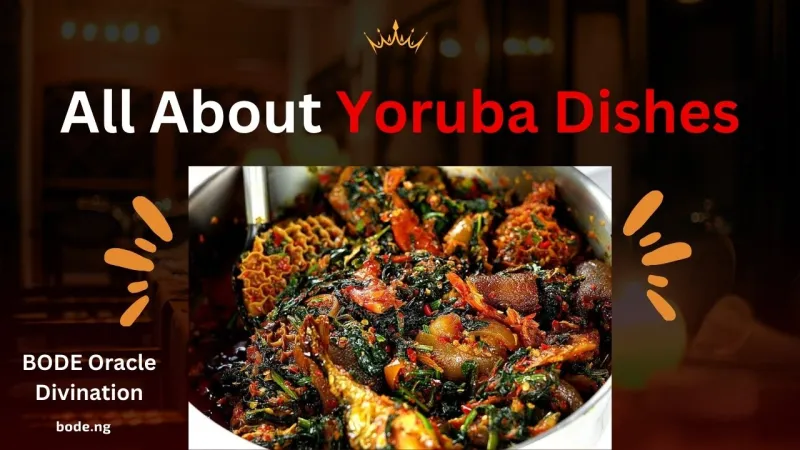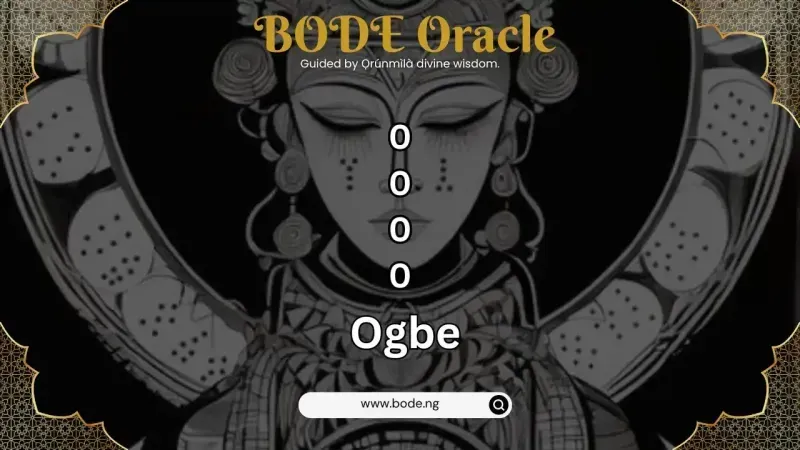The Yoruba people have a rich cultural heritage reflected in their music, art, attire, celebrations, and much more. Their exquisite taste is evident in every aspect of their lives, including their traditional cuisine.
Known for preparing mouthwatering meals, the Yorubas use fresh ingredients sourced from their farms, believed to be blessings from the gods, according to legend.
Yoruba dishes represent the diverse and flavorful dishes of the Yoruba people, originating from their native regions in Nigeria. Renowned for their culinary skills, Yoruba cooks and servers are celebrated for their creativity and artistry in preparing and presenting dishes.
Traditional Yoruba meals emphasize simple yet bold flavor combinations that highlight the natural richness of the region's ingredients.
The Yoruba people take pride in their ability to prepare and serve exceptional food. An old Yoruba saying, "Ọ̀nà ofun ní ọnà ọrùn," meaning "The path to the stomach is the path to heaven," perfectly captures this philosophy on food.
See More Trending Posts
Yoruba Alphabet And Pronunciation
Yoruba Mythology Deities And Orisa
Ifa Yoruba A Global Spiritual Practice
Yoruba Dishes And Facts
The way food is prepared and eaten reveals a lot about Yoruba culture. Traditionally, most meals are eaten with bare hands (fingers), although cutlery is sometimes used.
In rural areas, it is common for people to sit on a mat spread on the floor to eat. However, in cities, modernization has led to the use of dining tables for meals. Yorubas hold the belief that it is improper to talk while eating.
This is partly because many Yoruba dishes are heavily spiced with pepper. A popular Yoruba proverb states, "The soul that does not eat pepper is a powerless soul."
This saying highlights their love for spicy food, especially since other Nigerian tribes typically consume less pepper. If someone asks why I enjoy eating pepper, I simply respond with this proverb.
Another reason Yorubas refrain from talking while eating is their tradition of communal dining. It is customary for family members to sit together and share meals from the same large bowl, fostering a sense of unity and togetherness.
Read More
Yoruba Tribal Markings And Cultural Significance
What Are The Yoruba Dishes?
1. Obe Ila (Okra Soup)
Yoruba people have a unique way of preparing Obe Ila, commonly known as okra soup. This "draw soup" pairs perfectly with various swallow foods like amala, eba, and fufu.
Made from fresh okra vegetables, the soup is enriched with shrimp, goat meat, fish, and a blend of African spices. Popular across West Africa, including Nigeria, Ghana, and Cameroon, this dish is both nutritious and high in protein and healthy fats, making it a satisfying and wholesome meal.
2. Efo Riro (Vegetable Soup)
Efo Riro is a delicious Yoruba vegetable soup made with spinach and local ingredients, creating a rich, flavorful stew. It’s a hearty dish that leaves a lasting impression after just one taste.
This spinach-based soup, a Yoruba specialty, is simple to prepare yet incredibly tasty. Fresh or frozen spinach can be used, depending on availability. Traditionally enjoyed with swallow meals like eba, pounded yam, or fufu, it also pairs well with starchy sides such as boiled rice or plantains.
The soup often includes meat options like chicken, beef, shaki (tripe), and pomo (cow skin), as well as seafood such as mackerel, shrimp, and crayfish. Efo Riro is so beloved in Yoruba cuisine that it’s often seen as a measure of a cook’s skills.
3. Asun (Spicy Barbecue Goat Meat)
Asun is a popular Yoruba delicacy made from goat meat roasted over an open flame and sautéed with spicy peppers and aromatic seasonings. It’s often referred to as peppered or smoked goat meat.
Served as an appetizer, main dish, or snack, Asun is bold, spicy, and packed with flavor. Bite-sized pieces of goat meat are seasoned with onions, garlic, habanero, and bell peppers for a smoky, mouthwatering taste. This dish is especially popular in Nigerian joints and bars, offering a memorable kick that meat lovers can’t resist.
4. Ewa Aganyin (Mashed Beans)
Ewa Aganyin is a classic Yoruba dish made from cooked and mashed beans served with a spicy, flavorful stew made from palm oil, ground crayfish, and chili peppers.
Traditionally prepared for special occasions like celebrating the birth of twins, Ewa Aganyin has become a beloved everyday meal, perfect for breakfast, lunch, or dinner. Its distinct taste and rich aroma make it one of the most popular foods in Yoruba culture.
5. Iyan ati Obe Egusi (Pounded Yam and Egusi Soup)
Pounded yam (iyan) is a staple in many West African homes, often paired with soups like egusi, okra, ewedu, or Efo Riro.
Egusi soup, made from ground melon seeds, pepper, meat, and vegetables, is a flavorful and nutritious dish with a nutty taste and a hint of spice. The combination of ground melon seeds, beef, crayfish, spinach, and other seasonings creates a truly mouthwatering experience. This iconic dish is cherished across Nigeria and deserves global recognition.
6. Moi-Moi
Moi-Moi is a protein-rich bean pudding made by blending peeled beans with peppers and onions before steaming. Traditionally wrapped in ewe eran (soft cane leaves), the wrapping adds an authentic flavor to this satisfying meal.
Moi-Moi can be enjoyed on its own or paired with foods like garri, bread, or ogi (fermented cereal pudding), making it a versatile and beloved Yoruba dish.
Check Out
Yoruba Village In South Carolina
7. Obe Ata Dindin Pelu Iru (Locust Beans Stew)
This nice red stew is a Yoruba favorite made with palm oil, spicy peppers, tomatoes, onions, and iru (locust beans). It’s richly flavored, aromatic, and pairs perfectly with ofada rice, which is often prepared wrapped in leaves for an added depth of flavor.
Despite the variety of ingredients, this stew is surprisingly easy to make and delivers a bold, peppery taste with a hint of sweetness.
8. Amala with Gbegiri and Ewedu
Amala, a traditional Yoruba dish made from yam flour, is best enjoyed with gbegiri (bean soup) and ewedu (jute leaves soup). When combined, this trio is known as abula.
Amala’s distinct brown color and semi-solid texture make it a standout dish. Ewedu is seasoned with iru and spices, while gbegiri is a rich, flavorful bean-based soup. Together, they create an unforgettable culinary experience.
9. Akara (Bean Cakes)
Akara is a popular Nigerian breakfast made by blending raw beans, seasoning them, and deep-frying the mixture into fluffy bean cakes. Packed with protein and flavor, akara can also be enjoyed as a snack at any time of day.
10. Igbin (Snail Stew)
Igbin, or snail stew, is a Yoruba delicacy often reserved for special occasions. De-shelled snails are cooked in a spicy onion-pepper sauce, resulting in a dish that’s both flavorful and unique.
Served as a main dish or snack alongside a cold drink, igbin is a must-try for food lovers. Its unforgettable flavor is a highlight of Yoruba celebrations and parties.



